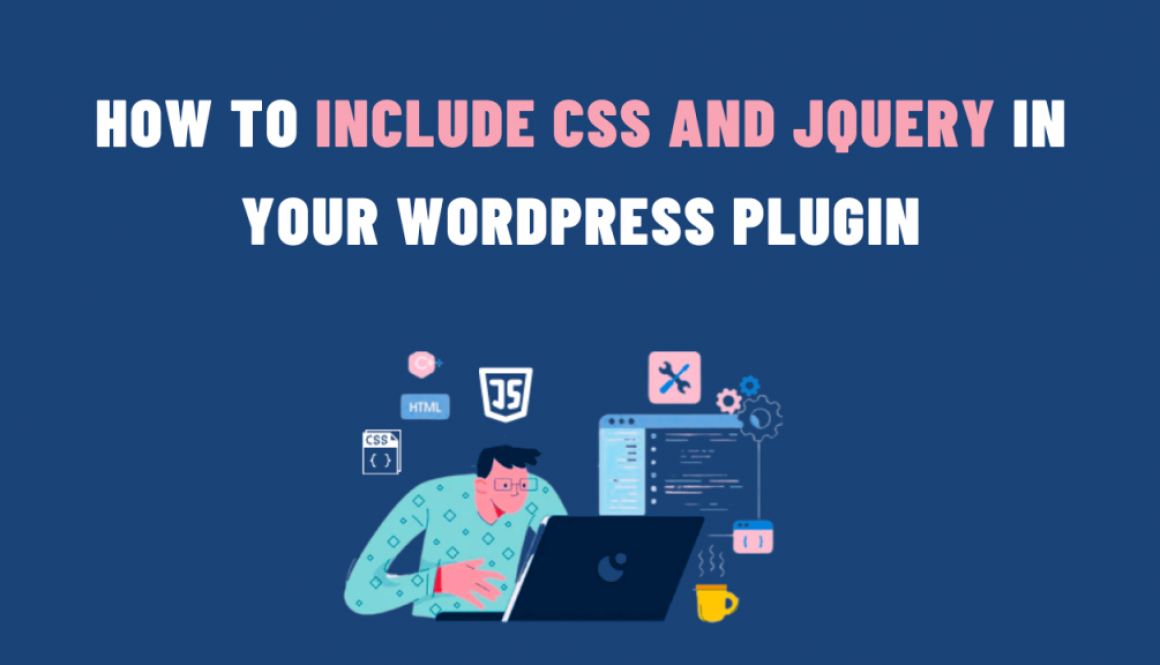How to Include CSS and jQuery in Your WordPress Plugin
WordPress is a versatile platform that allows developers to create powerful plugins to extend the functionality of websites. So, to make your WordPress plugin visually appealing and interactive, you may need to include custom CSS and jQuery. In this blog, we’ll guide you through the process of including CSS and jQuery in your WordPress plugin, and we’ll provide examples with code snippets to help you get started.
Step 1: Enqueue Your Styles and Scripts
WordPress provides a reliable way to include your CSS and jQuery files using the wp_enqueue_style and wp_enqueue_script functions. You should add these functions in your plugin file (e.g., your-plugin.php) or within your plugin’s main PHP file.
function enqueue_plugin_styles_and_scripts() {
// Enqueue CSS
wp_enqueue_style('your-plugin-style', plugin_dir_url(__FILE__) . 'css/your-plugin-styles.css');
// Enqueue jQuery and your custom script
wp_enqueue_script('jquery');
wp_enqueue_script('your-plugin-script', plugin_dir_url(__FILE__) . 'js/your-plugin-script.js', array('jquery'), '1.0', true);
}
add_action('wp_enqueue_scripts', 'enqueue_plugin_styles_and_scripts');
Explanation:
wp_enqueue_styleused to load your CSS file.wp_enqueue_scriptload jQuery and your custom JavaScript file.plugin_dir_url(__FILE__)helps to get the URL of your plugin’s directory.
Step 2: Create Your CSS File
Create a directory for your CSS and JavaScript files within your plugin’s directory. For CSS, you can create a directory called css and inside it, create a file named your-plugin-styles.css. Place your CSS code in this file. Here’s an example:
/* your-plugin-styles.css */
.your-plugin-container {
background-color: #f2f2f2;
padding: 20px;
}
Step 3: Create Your jQuery Script
Inside your plugin’s directory, create a directory called js, and within it, create a file named your-plugin-script.js. This is where you’ll put your JavaScript code. Here’s an example:
// your-plugin-script.js
jQuery(document).ready(function($) {
// Your jQuery code here
$('.your-plugin-container').click(function() {
alert('Plugin element clicked!');
});
});
Step 4: Use the Enqueued Styles and Scripts
Now that you’ve enqueued your styles and scripts, you can use them in your plugin’s output. For example, if you want to apply your custom styles to an HTML element within your plugin, you can do it like this:
// your-plugin-script.js
jQuery(document).ready(function($) {
// Your jQuery code here
$('.your-plugin-container').click(function() {
alert('Plugin element clicked!');
});
});
Explanation:
- In this example, we’re using a shortcode to output the plugin content.
- The your-plugin-container class is applied to the HTML container, and your custom CSS styles will be used.
Including CSS and jQuery in your WordPress plugin is essential for enhancing the user experience and appearance of your plugin’s elements. By following the steps outlined in this blog, you can ensure that your styles and scripts are properly enqueued and applied to your plugin’s content. Remember to maintain best practices and ensure that your code is efficient and error-free to provide a seamless experience for your users.

